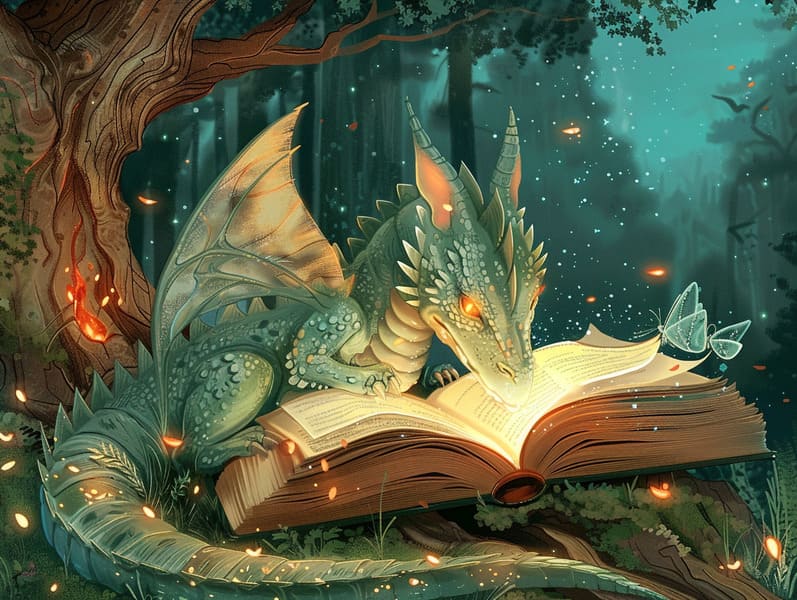The Origins of Ancient Fairy Tales with Its Immortal Magic.
The Origins of Ancient Fairy Tales with Its Immortal Magic.
Blog Article

Vintage fairy tales have deep roots. These narratives have been shared from one generation to the next centuries before they were ever documented. They were born from a variety of traditions, including American traditions. They were initially transmitted among older generations, often carrying themes and messages relevant to the societal norms and beliefs of the time.
Jacob and Wilhelm Grimm, Jacob and Wilhelm (the Grimm brothers), were among the first to collect many of these beloved narratives. Their published works, "Grimm's Fairy Tales," included tales like "The Little Glass Slipper," "The Story of Hansel and Gretel," and "Little Snow White," which have since become essentials in the world of iconic fairy tales. Similarly, H. C. Andersen's magical tales, such as "The Mermaid," and "The Little Duckling," have enchanted hearts worldwide, guaranteeing their place in the pantheon of classic fairy tales.
Despite being ancient, classic fairy tales remain as relevant as ever, especially as children's night stories. These magical stories are now available in multiple formats, including gorgeously illustrated books, magical animations, and digital fairy tales.
Their lasting presence can be credited to several captivating elements:
Ethical Lessons: Traditional fairy tales often offer important moral lessons. Fairy tales like "The Boy Who Cried Wolf" teach the significance of being truthful, while "The Story of the Tortoise and the Hare" exemplify the traits of persistence and modesty. These stories offer the young clear distinctions between truth and falsehood, helping to shape their moral compass in a soft yet profound way.
Sympathy and Perception: Classic fairy tales frequently present individuals facing tests and troubles, prompting audiences to relate with their struggles and cheer for their triumphs. For instance, "Beauty and the Beast" demonstrates the value of seeing beyond looks to recognize the inner core of a person, promoting compassion and recognition.
Cultural Understanding: Many ancient fairy tales are steeped in the cultural contexts from which they bloomed. Engaging with these stories can provide captivating looks into different customs, fostering a sense of world understanding and understanding.
Imagination and Creativity: The whimsical elements in ancient fairy tales—wizardry and magic—awaken children’s creativity. These fairy tales guide readers to otherworldly realms, invigorating fantasy dreams and a sense of awe that continues a lifetime.
Timeless fairy tales are not only magical but also illuminating. They act as mesmerizing tools in developing various cognitive and affective skills in young readers. When classic fairy tales are voiced, they improve language proficiency by showing new language and elaborate sentence structures. This practice also advances hearing perception and focus, as the young pay close attention, anxious to see what happens next.
Furthermore, examining the themes and characters of old fairy tales can cultivate reasoning skills and analytical skills. Children are shown to discover patterns, make predictions, and catch on to cause and effect. These contemplations also support little ones say their thoughts and feelings, fostering their emotional intelligence.
In today’s online age, the availability of digital storybooks has made these tales more attainable than ever. Online platforms and mobile apps make available vast collections of children's fairy tales that can be looked at or listened to anytime, anywhere. Fairy tales told out loud are particularly well-received, extending an enjoyable way for young readers to immerse in these magical stories. Voice books and spoken videos transport characters and settings to life, often enhanced by mesmerizing musical scores and instrumentals that intensify the storytelling journey.
The timeless fascination of timeless fairy tales lies in their ability to alter to the present while continuing with their central messages. Contemporary reimaginings of these stories often integrate more different figures and modern settings, making them meaningful to today’s audience. However, the check it out underlying themes of valour, empathy, and justice remain unchanged, continuing to move readers of all ages.
Timeless fairy tales also offer a sense of comfort and knowability. They share a ordered narrative with a unmistakable beginning, middle, and end, often finishing with the termination of conflicts and the triumph of good over bad. This foreseeability can be easing for young readers, bringing a sense of unwaveringness in an ever-changing world.
Old fairy tales continue to fascinate and train new generations, maintaining their charm and impact in modern society. As nighttime stories for kids, they bring a perfect blend of enchantment and education, sustaining moral values, empathy, and creativity. The prevalence of internet fairy tales and the in demand status of fairy tales narrated affirm that these timeless tales remain within reach to new generations.
By holding onto and broadcasting these fairy tales, we continue to honor the rich tapestry of storytelling and cultural heritage. Whether you are reading a gorgeously illustrated book, accessing a cyber library, or playing an voice book, the mystique of children's fairy tales is always within reach. These narratives emphasize of the continued influence of narratives and its ability to gather us across centuries and lands.
Even if you are viewing a artistically illustrated book, browsing a virtual library, or hearing an sound book, the splendor of popular fairy tales is always within reach.
These fairy tales emphasize of the persistent strength of storytelling and its ability to link us across generations and cultures, making a tie that fascinates and enlightens alike.